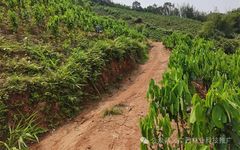Cinnamon (Ròu Guì) thrives in the warm climate of the South Asian tropics, beginning to sprout when the average daily temperature exceeds 20°C. Growth halts after late October when the average daily temperature drops below 20°C. Cinnamon is a semi-shade tolerant species, with young trees growing faster in shaded conditions, while their light requirements increase with age. It prefers red soil and red loam developed from granite, shale, and sandstone, thriving in deep, loose, humus-rich, moist, and fertile forest land, resulting in rapid growth and high yield. In poor soil conditions, cinnamon grows poorly, has a short lifespan, and reduced sprouting ability, only able to sprout for two to three generations. When planted in favorable soil and climatic conditions, cinnamon has strong sprouting ability, can be managed as a low forest, and can live for over 100 years.
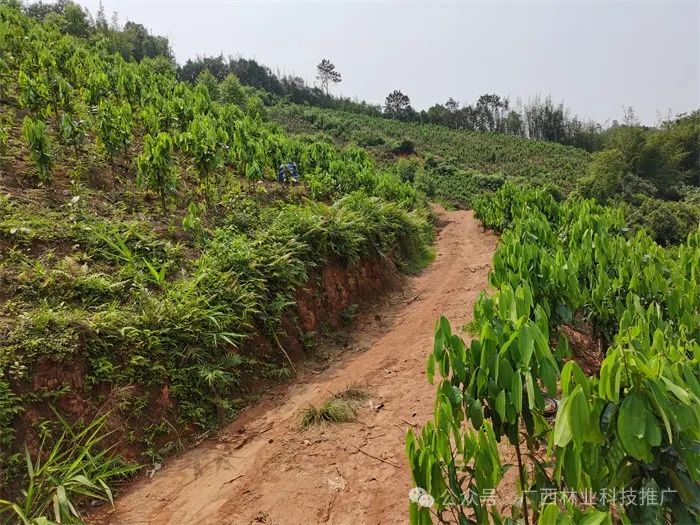
2-Year-Old Cinnamon Forest
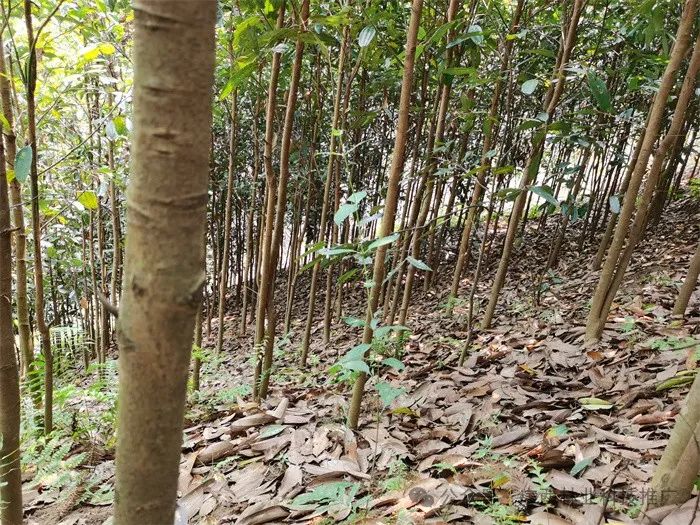
4-Year-Old Pure Cinnamon ForestCinnamon has a wide range of uses; the bark, branches, leaves, flowers, fruits, and roots can be processed into various products collectively known as “Gui Pin” (桂品), which is a traditional and precious Chinese medicine (Cinnamon has been used in medicine in China for over 2000 years, with the famous physician Zhang Zhongjing of the Western Han Dynasty skillfully using cinnamon bark and branches to treat various ailments). The products made from cinnamon bark include Gui Tong, rolled cinnamon, edge cinnamon, board cinnamon, smoked cinnamon, cinnamon fragments, and cinnamon powder, all of which are considered warm medicines. The immature fruits and persistent flower calyxes can also be used medicinally, referred to as Ròu Guì Zi (肉桂子) and Gui Zhōng (桂盅). Cinnamon leaves can be steamed to produce cinnamon oil, with a dry leaf oil yield of 1%-1.2%, which can be used as medicine or as a spice, both being export specialties. The wood can be used for furniture, firewood, etc. The cinnamon tree is one of the trees with the highest utilization rate.
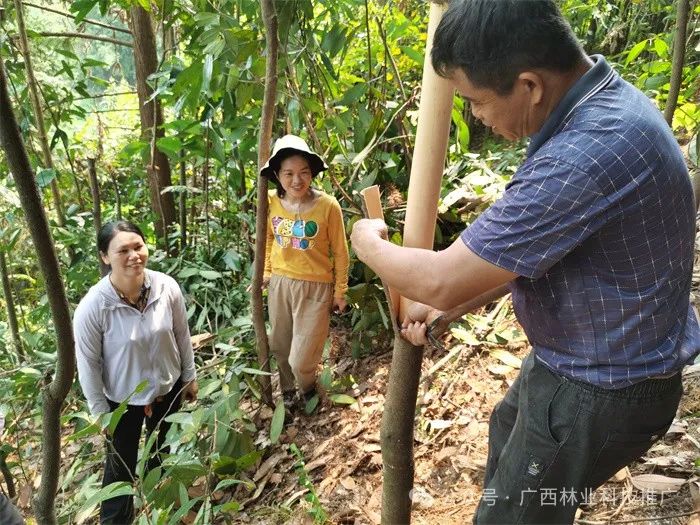
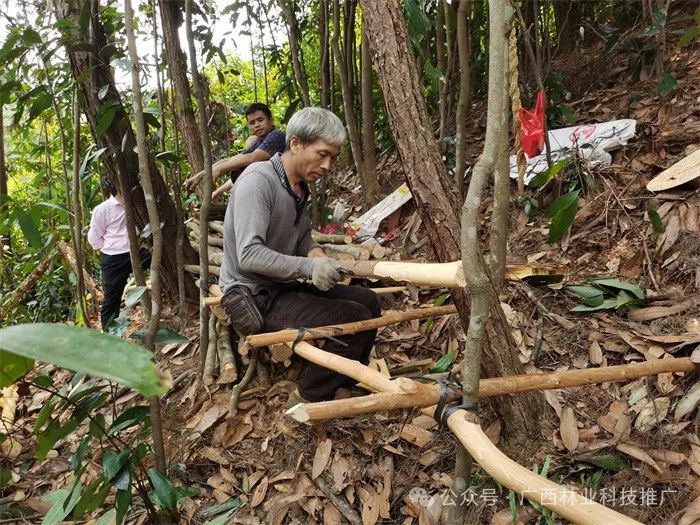
Harvesting Cinnamon Bark
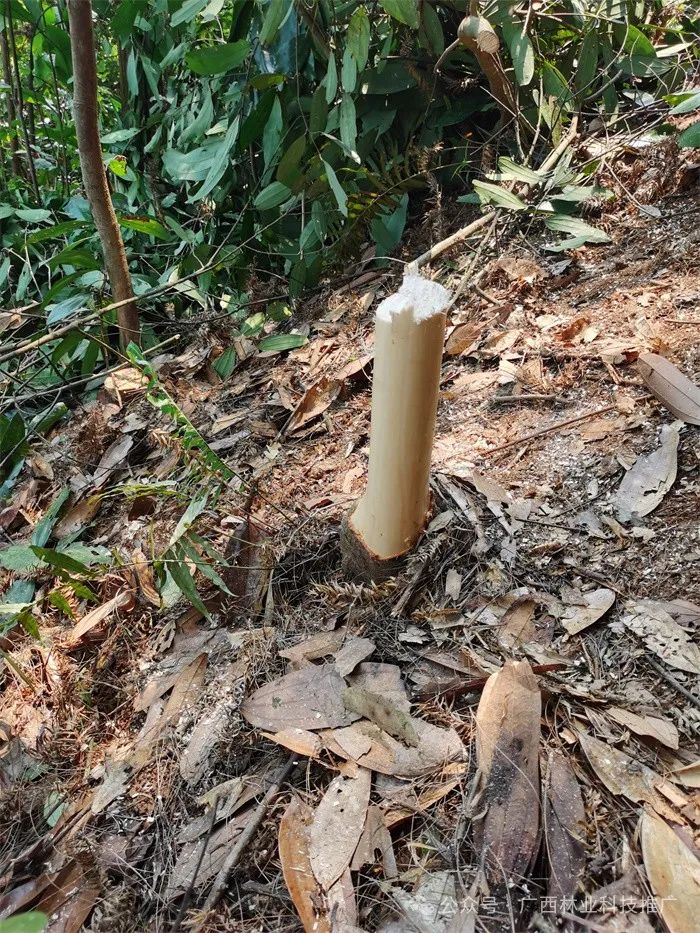
The resulting stump after harvestingCinnamon generally flowers from May to June, with fruits maturing between February and April of the following year, appearing purple-black in color.Cinnamon bark refers to the bark stripped from the trunk of the cinnamon tree. The harvesting of cinnamon has strict seasonal requirements and should be done when the sap is flowing, with two harvests possible each year: one from the spring equinox to the beginning of summer, and the other around the autumn equinox. With proper management after planting, cinnamon can be harvested for over 60 years, with some even lasting up to 100 years.

Drying Cinnamon Bark
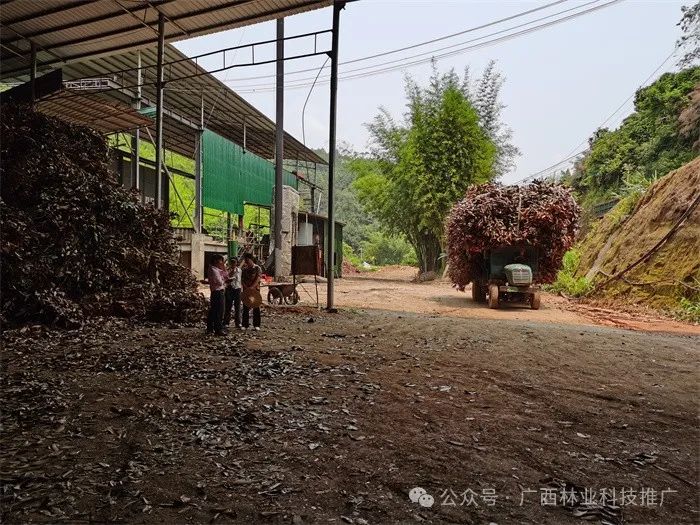
A corner of the cinnamon oil processing factoryOn April 27, 2024, a technical team from the Forestry Bureau of Cenxi City visited the main cinnamon-producing town of Botang to understand the development of the cinnamon industry. This coincided with the Grain Rain season, a busy time for the local community to strip, dry, and process the leftover cinnamon wood and branches after harvesting.In Xinjian Village of Botang Town, villager Lu Binwei is organizing cinnamon bark harvesting on his cinnamon mountain, with five workers systematically carrying out the processes of clearing debris, using specialized tools to cut a circle at the base → determining length → cutting a circle on the trunk → making a vertical cut between the two circles → stripping the bark → cutting the tree → removing branches and leaves → stacking. They repeat the process of cutting a circle → determining length → cutting a circle → making a vertical cut → stripping the bark → completing the full tree stripping → bagging the bark, all in an orderly manner… According to worker Lu Haizhao, they can strip 200-300 jin (斤) of fresh cinnamon bark in a day, with a labor cost of 1.2 yuan per jin, earning over 200 yuan daily. Over a harvesting season, the average income can exceed 10,000 yuan, which is a significant income.Villager Lu Binwei explained that after felling the cinnamon tree with bark, generally, 25 jin of cinnamon bark can be stripped from every 100 jin of cinnamon wood. Fresh cinnamon bark, when dried, yields about 45-50 jin of dry cinnamon bark from every 100 jin of fresh cinnamon bark, with a drying rate of 45%-50%. Lu Binwei estimates that this year, his 30 mu (亩) of cinnamon mountain can yield over 4,000 jin of dry cinnamon bark, generating an income of over 20,000 yuan.
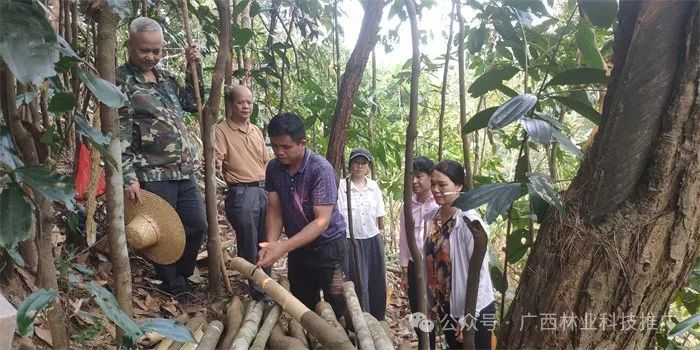
On-site communicationThe technical team from the Forestry Bureau also conducted a hands-on experience of bark stripping. They measured the bark yield of two cinnamon trees over 10 years old, where Tree 1 had a diameter of 9.2 cm and a height of 8.3 m, yielding 8.3 jin of fresh cinnamon bark; Tree 2 had a diameter of 7.4 cm and a height of 6.3 m, yielding 5.8 jin of fresh cinnamon bark. During the bark stripping experience, the technical team found that cinnamon trees with straight, smooth trunks without knots are easier to strip and shape into products like Gui Tong and board cinnamon. In contrast, trees with crooked trunks and knots tend to develop cracks or defects during bark stripping, resulting in incomplete cinnamon bark. The straightness and smoothness of the trunk are related to the planting density and pruning practices that prevent the formation of knots; the thickness of the bark is influenced by adequate sunlight and the age of the cinnamon tree. Therefore, the technical team discussed with villagers issues related to planting density, nurturing management, shading arrangements, appropriate pruning in the first 1-3 years to prevent large knots, and increasing sunlight exposure before bark stripping to enhance bark thickness. They also provided guidance on cultivating new shoots from the roots after bark stripping, selecting shoots, and fertilization requirements to seek sustainable development of the cinnamon industry, making the benefits of cinnamon farming more evident.In a cinnamon oil processing factory in Longtian Village of Botang Town, the factory is systematically acquiring the necessary raw materials of cinnamon branches and leaves. The factory manager stated that the cinnamon oil factory was established in 2021 with an investment of over 3 million yuan, officially starting production in 2022. During the spring and autumn when raw materials are abundant, the factory can process 1 million jin of cinnamon branches and leaves monthly, producing over 3.5 tons of cinnamon oil (with an actual oil yield of 0.7%-0.8%). At peak times, the price of cinnamon oil reached 240,000 yuan per ton, and the current price is 170,000 yuan per ton, still yielding a slight profit.
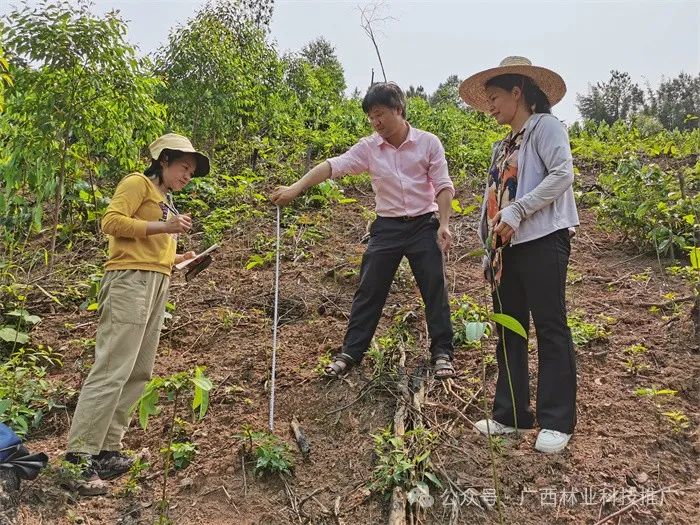
New Forest MeasurementIn various villages of Botang, cinnamon forests are ubiquitous, including pure forests, mixed forests, large areas, and small plots of cinnamon trees. There are newly sown cinnamon nurseries, newly established cinnamon forests in spring, growing young and mature cinnamon forests, excellent mother trees for seed collection, and cinnamon forests that have just been harvested, with leftover branches and leaves yet to be cleared. The cinnamon mountains of Botang are indeed abundant. The forestry technical team measured a 2-year-old pure cinnamon forest planted by the community, with a planting density of 667 trees per mu, an average height of 1.2 meters, and a crown width of 0.25 square meters, which has already undergone nurturing and fertilization operations. This year’s new planting adopted large seedlings, with measured heights exceeding 80 cm, and were planted using hole-digging methods rather than the traditional hoeing method, reflecting the increasing willingness of the local community to adopt the high-yield cultivation techniques promoted by the forestry department. According to Pu Songcai, the head of the forestry station in the town, Botang currently has over 80,000 mu of cinnamon forests (including 39,000 mu of pure cinnamon forests and 45,000 mu of mixed forests with trees), producing over 5,000 tons of dry cinnamon bark annually, with a value of over 60 million yuan, providing employment for over 5,000 people; the production of cinnamon oil is about 110 tons, with a value of over 20 million yuan, providing employment for over 2,000 people. According to the Cenxi Forestry Chronicle, in 1990, there were 217 households in Xixiang Village of Botang Town, with a population of 1,157. That year, the income from cinnamon bark and oil alone was 850,000 yuan, with a per capita income of 734.6 yuan. It is evident that cinnamon has become an indispensable industry for the people of Botang.Cinnamon is a traditional industry in Cenxi City, known as “Xijiang Gui”. It has a development history of over 100 years, and the saying “A family with ten thousand cinnamon trees can prosper for generations” has been passed down through the community. In 2001, the National Forestry Bureau awarded Cenxi City in Guangxi Zhuang Autonomous Region the title of “Hometown of Chinese Cinnamon”. Botang is one of the main production areas for Cenxi cinnamon. In Botang Town, every household grows cinnamon, with trees seen in front of and behind houses, by the village, along the roads, and on the mountains, leading to the saying, “No cinnamon, no village.” Currently, the purchase price for dry cinnamon bark is 600-700 yuan per dan (担), cinnamon wood is 20 yuan per dan, and cinnamon branches and leaves are 45 yuan per dan, making it a sustainable industry for the local community. Moreover, the buyers or processing factories are located within the town, creating a relatively complete industrial chain, providing the community with a clear market for their products and allowing them to enjoy the benefits of growing cinnamon.

Scan the QR code in the image
Follow us
Source: Cenxi City Forestry Bureau, Li Mingfeng

